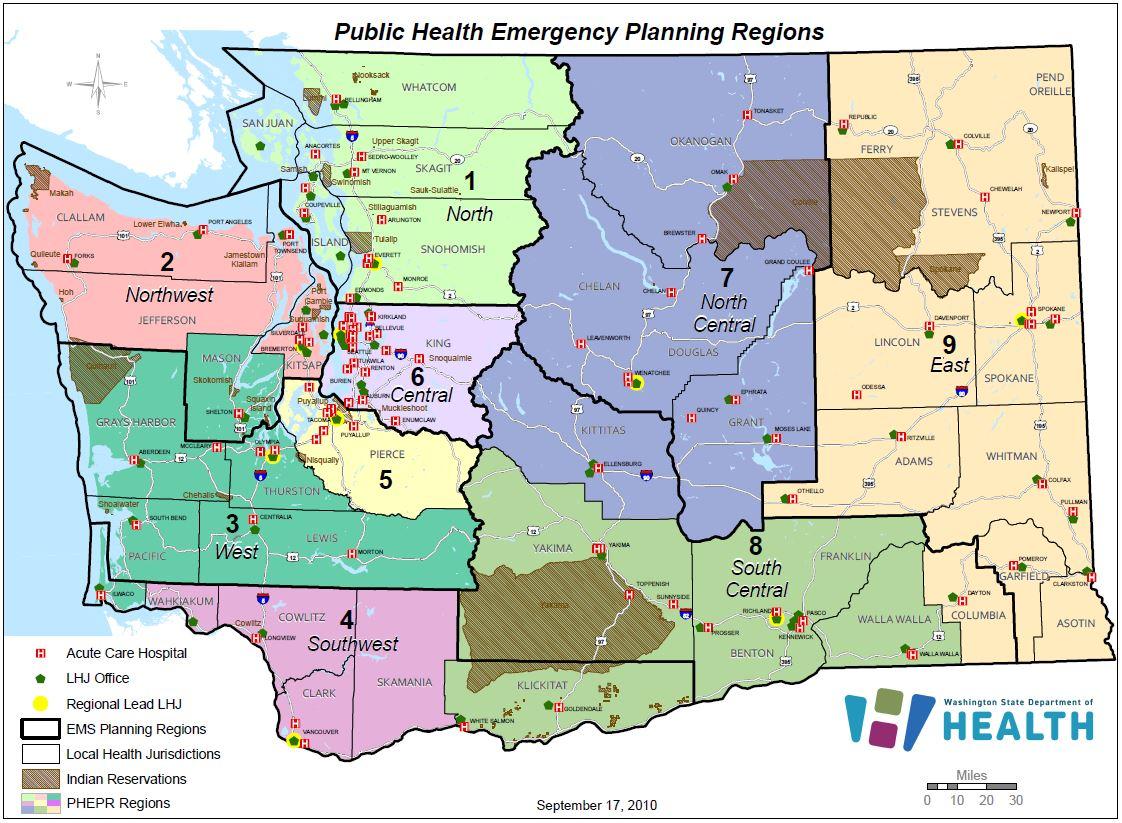Regional Approach Encourages Coordination and Resource Sharing
To encourage coordination and resource sharing, state public health emergency preparedness activities are conducted through nine regions.
One local health jurisdiction in each region is designated the lead agency for that region and hosts a regional emergency response coordinator (RERC). The lead agency and coordinator help local health jurisdictions to create local emergency preparedness plans and to collaborate on a regional plan that will tie the local plans together. The RERC encourages the many entities who will need to work together during a public health emergency to participate in the planning process.
In addition to planning, each region will work to improve disease surveillance in its area and provide necessary emergency preparedness training to local public health, medical, emergency response, and other personnel. This work is supported by regional epidemiology and surveillance coordinators and regional learning specialists. Regional communication specialists help local health agencies provide preparedness messages and crisis response information to the general public. To help develop local Strategic National Stockpile (SNS) plans each region has been assigned a part-time SNS coordinator.
Washington's Emergency Management Division (EMD) regions have been structured to match the Public Health Emergency Preparedness and Response regions.

See a more detailed version of the map of public health emergency preparedness regions.
